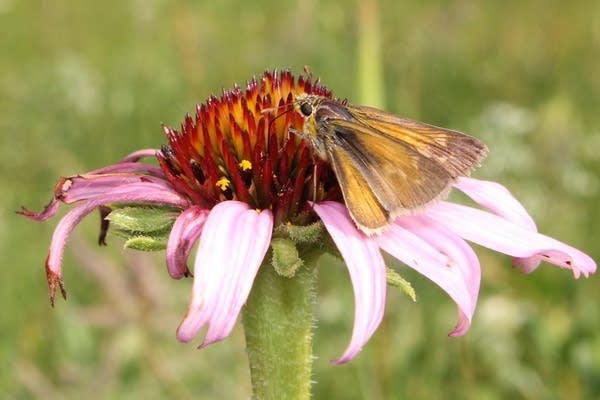Acres of prairie set aside to save butterfly species

Go Deeper.
Create an account or log in to save stories.
Like this?
Thanks for liking this story! We have added it to a list of your favorite stories.
The U.S. Fish and Wildlife Service has designated tens of thousands of acres of critical habitat to try to save two prairie butterfly species.
The habitat areas where the Dakota skipper and Poweshiek skipperling are found have been declining for the past few years, according to federal wildlife officials. These prairie habitats, which are mostly located in the agricultural areas of the Dakotas and western Minnesota, are considered essential for the survival for these species.
On Wednesday, FWS announced that it designated about 20,000 acres of critical habitat in 38 units in Minnesota, North Dakota and South Dakota for the Dakota skipper, and about 26,000 acres in 56 units in Iowa, Michigan, Minnesota, North Dakota, South Dakota and Wisconsin for the Poweshiek skipperling.
In 2014, the Dakota skipper was designated as a threatened species while the Poweshiek skipperling was designated as endangered species.
Turn Up Your Support
MPR News helps you turn down the noise and build shared understanding. Turn up your support for this public resource and keep trusted journalism accessible to all.

In Minnesota, the Dakota skipper is rare, according to the Minnesota Department of Natural Resources. The Poweshiek skipperling also is considered rare in the state, and like the skipper, was abundant at one time.
"Loss of prairie habitat is probably the most major factor for both of these species," said Georgia Parham, a public affairs specialist for the FWS. "The places that it can survive are just being converted to either land development or agriculture or other types of uses. It's basically a habitat problem."
Of the total areas that have been designated as critical habitat, about 12,000 acres are common to both species. According to FWS, designating an area as of critical habitat does not affect land ownership.
"That these butterflies have survived at all is because of the good stewardship of some of the region's landowners," FWS Midwest regional director Tom Melius said in a statement. "We will continue to work with these and other landowners to ensure the conservation of remnant prairie habitat and these prairie butterflies."
Dear reader,
Political debates with family or friends can get heated. But what if there was a way to handle them better?
You can learn how to have civil political conversations with our new e-book!
Download our free e-book, Talking Sense: Have Hard Political Conversations, Better, and learn how to talk without the tension.



